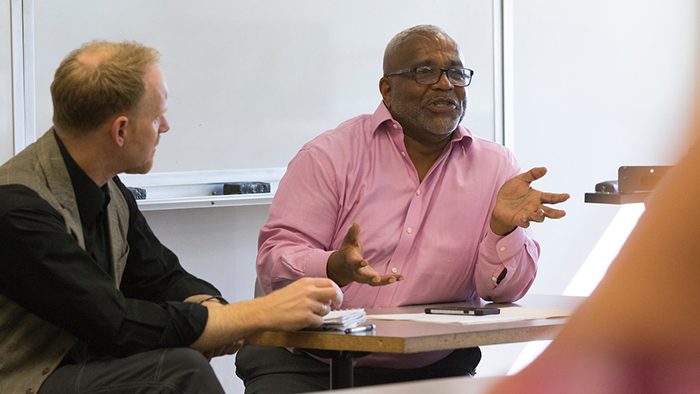On April 14, 1906, racial tensions reached a tipping point in the Queen City of the Ozarks. Mob rule and violence ensued, and the lynching that occurred in Park Central Square on the eve of Easter Sunday became a permanent mark on the history of the Ozarks.
In the aftermath of the catastrophe, many African-Americans fled Springfield and the surrounding area, leaving only a residual minority presence for the foreseeable future. Those that stayed or eventually returned to the area over the coming decades had the daunting challenge of finding some way to return to a state of normalcy after such a jarring event.
To understand the uncommon experiences of these individuals, Lyle Foster and Dr. Tim Knapp, both sociology faculty members at Missouri State University, and Lucie Amberg, strategic communications specialist at Missouri State, are working to locate and compile stories about the Ozarks through the eyes of its African-American community.
“If you want to know what an experience was like for someone, you have to ask them — and then you have to listen,” said Amberg. “Even if it’s a situation you feel you know, you never truly understand until you hear from someone who has lived it.”
Searching for stories to tell
The project originally began as a partnership between Foster and Knapp, who worked together on a series of Ozarks Public Radio (KSMU) interviews. Foster and Knapp realized that the project had the potential to become something more if they could expand to other forms of media, so they reached out to Amberg for assistance.
“They were hoping I could suggest a student, but when they told me about the project, I suggested myself,” said Amberg. “I have always been interested in people and their stories, and these stories are right there, just waiting to be told.”
With Amberg on board, the project now seeks to reach and tell the stories of the African-American community in the Ozarks in a variety of different forms, including print, video and audio.
“We want to discover what day-to-day life was like for the African-American community,” said Foster. “We want to identify ways life was similar to other communities across the country and in what ways their experiences were unique to the Ozarks.”
‘The Journey Continues’
The stories collected by the trio of Amberg, Foster and Knapp have provided a wealth of new insights into what life was like for African-Americans in the Ozarks over the past century.
“We are hearing things that we didn’t know before about an area known as Jones Alley, which was a black business district,” said Foster. “It was very vibrant at the time, but does not exist today.”
The ultimate goal of the project, said Foster, is to draw out the raw feelings of day-to-day experiences.
“We’ve heard about things such as going to Lincoln High School, which was an all-black school that was very pivotal to the life of the black community in Springfield,” said Foster. “Public accommodations is another interesting issue — what was the experience like to look in the window of a store, but not be able to go in?”
Thanks to funding from the Missouri Humanities Council, the team is now working on developing the first draft of the project’s website, tentatively titled “The Journey Continues.”
“Our vision is that this project could become a living history — it’s about how the story has unfolded and how it will continue to unfold in the future,” said Amberg. “When all of these stories are put together, it becomes a mosaic of these different experiences that we hope will create a very rich picture.”
For more information, contact Foster at 417-836-3018.


Leave a Reply